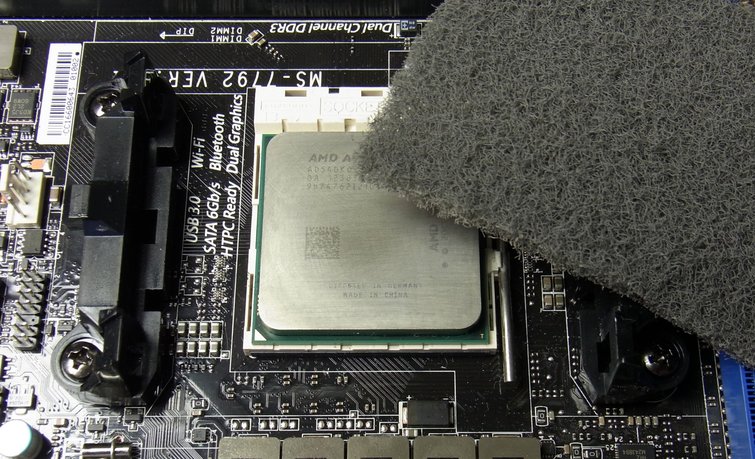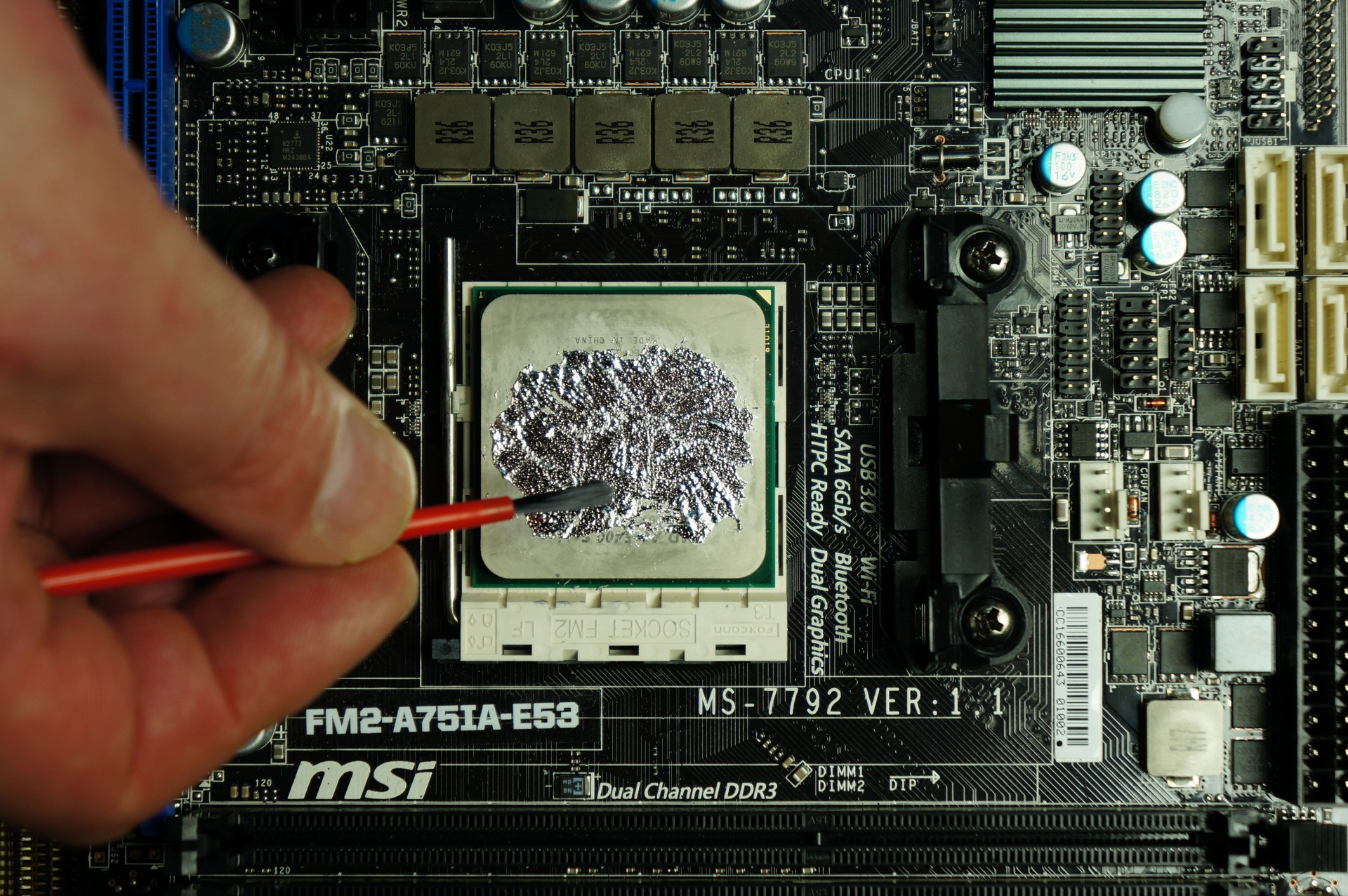Cleaning and grinding
The a and o for a good success and the adhesion of the metallic liquid is a clean and above all grease-free surface on the radiator floor and CPU heatspreader! Of course, the liquids of the respective herstller of such liquid metal products are best suited, whereby at least in the pre-cleaning of normal and much cheaper isopropyl alcohol from the pharmacy or the laboratory requirement is just as well suited.
However, the acetone and cleaning gasoline must be kept away in any case and also the cheap fuel spirit contains constrictions, which are not always very conducive. But important for all cleaning fluids: after cleaning, it is necessary to wait until the last residues have evaporated!
Extremely smooth surfaces, however, allow the liquid metal to bead off quickly, which can then drive the sweat on your forehead. Even if it doesn't seem very plausible to rough up the supposedly smooth heat spreader or to to grind – you can only recommend it, otherwise you will quickly make yourself a fruit when passing by. In addition, the quantity is usually only sufficient for 2 attempts.

Grinding should be discreet and even light, because the supposedly sloppy sponge, which almost always contributes to such products, leaves quite clear grooves when exaggerated. So piano, dominators, and move the sponge better like a ballerina. A hearty shoe-plattler is absolutely out of place here.
The perfect application
The application is a little tricky, even if more modern products are not completely dissimilar to conventional pastes, but are many times more liquid. However, the composition is still not entirely unproblematic, because more inert metals, such as Aluminium, but also certain alloys, are attacked by components of the paste and then react with the ingredients.
As a result, the advantage of actually higher thermal conductivity then quickly reverses and an insulating layer is created. Copper floors and nickel-plated heat sinks, on the other hand, are well suited and the heat spreaders of the CPUs are also reliable for use.

If you have slightly roughened the heat spreader, the paste applied as a drop can be distributed reasonably humanely with the enclosed brushes. The amount varies depending on the size of the CPU (or GPU), but you should plan for larger CPUs almost half of the tube, for smaller ones about a third.
It is always advantageous to paste a CPU in the extended state in order to protect the motherboard. The cleaning sponge serves as a soft base so as not to bend the pins.
In the end, it is up to each individual to decide whether they want to take the risk of a slightly more complicated handling and whether it is really worth the effort.
- 1 - Einführung und Übersicht
- 2 - Grundlagen: Heatspreader und Heatsink
- 3 - Wärmeleitpaste: Funktion und richtiges Auftragen
- 4 - Sonderfall Grafikkarte
- 5 - Sonderfall Wärmeitpads und mögliche Verbesserungen
- 6 - Flüssigmetall und die Grenzen
- 7 - Testsetup und Messmethoden
- 8 - Testergebnisse: Wasserkühlung
- 9 - Testergebisse: Lüftkühlung (großer Turmkühler)
- 10 - Testergebisse: Lüftkühlung (Boxed-Kühler)
- 11 - Testergebisse: Grafikkarten-Kühlung (GPU)
- 12 - Testergebnisse: Viskosität
- 13 - Testergebnisse: Verarbeitung und Anwendungssicherheit
- 14 - Zusammenfassung und Fazit

































Kommentieren